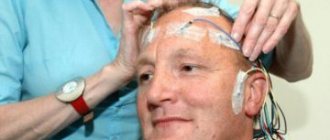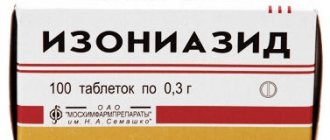Neuropathies are the general name for diseases associated with damage to peripheral nerves. Among the most common causes is compression of the nerve in a narrow canal (bone, fibrous). Such channels are called tunnels, and neuropathies are called tunnels.
Another common name for such syndromes is compression-ischemic neuropathies. Compression means pressure on the nerve, and ischemia means a lack of blood supply to the nerve.
One of the effective methods of treating such diseases is osteopathy, which is used in the Tibet clinic on the basis of evidence-based medicine. With its help, tunnel neuropathies associated with pinching of the median, ulnar, radial, peroneal, tibial and other nerves are well treated.
Thanks to treatment sessions in “Tibet”, the entire complex of symptoms, both motor and sensory, disappears, and the disease is eliminated at the level of its cause. Positive results are achieved in more than 90% of treatment cases.
Compression-ischemic: basic information
Sometimes you can come across the term “tunnel compression-ischemic neuropathies.” And this is by no means a tautology.
The term “compression-ischemic” means that a sufficiently long-term compression of the nerve occurs, accompanied by circulatory disorders, which lead to ischemia of the nerve fibers.
There are many varieties of this pathology, for example, tourniquet, tunnel, iatrogenic (postoperative) neuropathies. Tunnel diseases are classified as a separate group because they have a common symptom: local compression of the nerve occurs inside the natural canals and tunnels.
If you look at the ICD 10 code for tunnel neuropathy, you will note that there is a clear division into mononeuropathies of the upper and lower extremities. They are assigned codes G56 and G57, respectively. The last group includes, for example, tunnel neuropathy of the peroneal nerve.
Diagnosis of such diseases is carried out using various methods. For example, ultrasound of the nerve and radiography of joint tissues are considered the most informative, although in some cases the doctor may prescribe an additional study - electromyography.
Tunnel neuropathy of the ulnar nerve: causes and symptoms
The disease is one of the most common pathologies of the brachial plexus nerves. The cause is considered to be compression, that is, compression of the nerve in the specified area.
This is often due to the characteristics of professional activity, for example, if a person has to work with his elbows resting on a desk or machine for a long time. Although in some cases this form of the disease can also develop in athletes with prolonged compression of the base of the palm, as happens with cyclists. A similar picture is typical for those who work a lot with hand tools.
The reason that the disease so often affects the ulnar nerve is its superficial location, which makes this area especially vulnerable.
Despite the name “ulnar nerve tunnel neuropathy,” signs of the disease can appear at the level of the wrist, and in the area of the ring finger and little finger.
It all starts with numbness and paresthesia. The function of the radial and median nerves is preserved. But as the disease progresses, the hand begins to resemble a clawed paw, since the main phalanges of the fingers are sharply extended, the little finger is moved to the side. Atrophy of the small muscles of the hand occurs.
How does osteopathy work?
Neuropathies are associated with the specific nature of the work, which requires constant tension of the hand and the performance of monotonous movements. However, it is incorrect to classify them as purely occupational diseases. In reality, the causes of such diseases are related to imbalances in the body.
Osteopathy affects these causes and restores internal balance in the body.
For example, narrowing of the tunnel can be associated with inflammation, swelling, and this, in turn, with the immune system, arthritis of the joints, including autoimmune ones (rheumatism, rheumatoid arthritis). In this case, local treatment in the area of infringement is not enough. It is necessary to influence the immune system as a whole.
Using visceral therapy methods, the osteopathic doctor eliminates prolapse of the gastrointestinal tract organs, restores their oscillatory movements, and improves their functioning.
Some neuropathies are associated with the spine (for example, ulnar nerve syndrome). In this case, the osteopathic doctor uses structural therapy techniques to treat osteochondrosis.
Pathology of the radial nerve: causes and symptoms
Tunnel neuropathy of the radial nerve is considered an equally common disease. For its symptoms to occur, sometimes it is enough just to place your hand poorly during sleep. Interestingly, this usually happens in people who fall asleep soundly after heavy physical work, or due to prolonged lack of sleep, but this situation also occurs in patients who fall asleep after alcohol intoxication.
But most often it occurs due to muscle overload and injury, and in general is a secondary pathology. This phenomenon is encountered by those who run, conduct, as well as patients who have to use crutches.
Other factors contributing to the development of this disease are:
- humerus injuries;
- incorrect application of the tourniquet;
- bursitis, synovitis, other inflammatory diseases, including rheumatoid arthritis;
- infections (including influenza);
- intoxication;
- degenerative joint diseases - arthrosis.
Tunnel neuropathy of the radial joint is characterized by the so-called hanging hand. This means that if the arm is extended forward, the hand on the affected side will not be able to assume a horizontal position and will hang down. At the same time, the index and thumb are pressed against each other.
The patient experiences numbness and paresthesia on the back of the hand, as well as in the area of the index, thumb and middle fingers.
This type of neuropathy includes two main syndromes. This is radial tunnel syndrome, which is characterized by compression of the superficial branch of the nerve in the area of the anatomical snuffbox, as well as Turner syndrome (it is more often observed with a fracture).
Tunnel syndromes: symptoms, diagnosis and treatment
A third of peripheral nervous system diseases are tunnel neuropathies. Tunnel syndrome is usually defined as a complex of clinical manifestations (sensitive, motor and trophic) caused by compression and pinching of a nerve in narrow anatomical spaces (anatomical tunnel). But under certain pathological conditions, the channel narrows, and a nerve-channel conflict arises [Al-Zamil M.Kh., 2008].
More than 30 forms of tunnel neuropathies have been described in the literature [Levin O.S., 2005].
Carpal/carpal/tunnel syndrome
Carpal tunnel syndrome is the most common condition among all carpal tunnel syndromes.
Etiology
Carpal tunnel syndrome has a wide range of causes. There are two mechanisms for the formation of this syndrome. The first is a decrease in the size of the carpal tunnel itself. These include causes such as arthrosis, trauma, acromegaly, and excessive mechanical stress. The second mechanism is an increase in the size of the contents of the carpal tunnel. For example, with ganglion cysts, nerve tumors, deposition of substances (eg amyloid), or synovial hypertrophy in rheumatoid arthritis. Also, certain individual factors, such as the size and shape of the wrist and the shape of the median nerve, may contribute to the development of carpal tunnel syndrome.
Clinical picture
Carpal tunnel syndrome is primarily characterized by pain and sensory symptoms. A typical symptom is brachialgia, parasthesia, or nocturnal ascending pain emanating from the wrist. In addition, weakness in the hand is determined. Weakness is usually a late symptom.
Radiation diagnostics
When diagnosing carpal tunnel syndrome, a method such as an X-ray of the bones of the hand can be used to confirm/exclude injuries and fractures of the carpal bones (especially the hamate and trapezius bones), as well as confirm/exclude severe osteoarthritis and other arthropathies.
However, conventional radiographs have limited use in the diagnosis and evaluation of carpal tunnel syndrome, since this method can only evaluate bone structures.
CT can be used to assess the transverse dimension of the carpal tunnel, as well as to detect calcification in the tendons within the carpal tunnel.
However, CT is limited in its ability to visualize the median nerve and carpal tendons to make a definitive diagnosis of carpal tunnel syndrome.
CT scan is not possible. Therefore, other methods for visualizing the soft tissue of the carpal tunnel will be preferable.
Ultrasound diagnostics allows one to visualize the contents of the carpal tunnel quite well.
Ultrasound image
On MRI, inflammation of the synovium and tendon is visualized as low signal intensity on T1-weighted images and increased signal intensity on T2-weighted, T2*-weighted (STIR) sequences.
Regardless of the etiology of carpal tunnel syndrome, changes in the median nerve are similar and include the following: diffuse swelling or segmental enlargement of the median nerve. MRI is also used to identify space-occupying lesions such as neuromas, lipomas, and hemangiomas.
MRI images of carpal tunnel syndrome
Treatment:
At the initial manifestations of the carpal tunnel symptom (mild degree), treatment includes limiting the load, anti-inflammatory drugs, and if ineffective, hormonal drugs.
Surgery may be necessary if symptoms are severe and other methods do not provide any relief. Surgery should not be the treatment of choice for this syndrome. Even after surgery, some problems may remain, for example, weakness in the operated limb persists in approximately 30% of cases.
Author:
Polina Aleksandrovna Podgornaya, researcher at the Research Center for OZD of the Management Company "MRI Expert and Clinic Expert"
Pathology of the median nerve: causes and symptoms
Tunnel neuropathy of the median nerve can be caused by a wide variety of causes. These are, for example, injuries to the upper limb or nerve damage associated with professional activities (typical for people who have a large load on their hands, resulting in constant overexertion). Also, a similar situation can be caused by incorrect injection into the antecubital vein.
Symptoms of median nerve tunnel neuropathy include pain in the thumb, index and middle fingers. In addition, discomfort or pain of varying degrees of intensity is also felt on the inner surface of the forearm.
It becomes more and more difficult to bend the palms of the hand (during the examination, the doctor specifically asks to clench the palm into a fist to check this feature). Muscles can atrophy quite a lot over time, especially in the big toe area. If you don't do anything about it, the hand will increasingly resemble a monkey's paw.
Symptoms of carpal tunnel syndrome
At the initial stage, carpal tunnel syndrome manifests itself as a mild aching pain in the wrist. An unpleasant sensation occurs after long, monotonous work, but a short break helps to cope with the symptom.
Over time, painful deviations are added to:
- constant debilitating pain;
- muscle weakness, stiffness of movement;
- burning in the wrist area;
- electric sensation;
- trembling in the hands;
- decreased muscle tone;
- pain on palpation in the area of the nerve projection;
- numbness of fingers;
- swelling in the affected areas;
- bluish tint.
Painful symptoms and paresthesia are more pronounced at night. Sometimes to such an extent that they are deprived of sleep.
Tunnel neuropathy of the peroneal nerve and its features
This is a special type of mononeuropathy. It manifests itself in the so-called foot drop syndrome, in which the patient is unable to bend the foot or straighten its toes. In addition, the skin of the anterolateral area of the leg is affected, its sensitivity decreases.
The peculiarity of this pathology, in comparison with those described above, is the following: it affects the peroneal nerve, consisting of relatively thick nerve fibers. They are distinguished by a solid layer of the myelin sheath, but it is this structure that is most susceptible to damage when metabolic processes are disrupted.
According to statistics, in only 30% of patients it is associated with primary damage to the nerve itself, and in most cases it develops during treatment after injuries and surgery.
Of course, one should not underestimate other reasons that can lead to such a pathology. This, for example, can be various injuries (from a knee bruise to a shin fracture), vascular disorders leading to ischemia, curvature of the spine, gout, diabetes, wearing excessively tight shoes.
When a joint is injured, the nerve damage is acute and pain immediately appears. In other cases, neuropathy develops gradually, as a chronic disease, in which there is a violation of the extension of the foot, as a result, when walking, the patient is first almost imperceptibly, and then quite strongly forced to bend the affected limb at the knee joint so that the toe does not catch on the floor.
The process is accompanied by pain both in the foot itself and in the lower leg. Over time, muscles can atrophy. The patient cannot stand on his heels or walk on his toes, and this is one of the simplest ways to check which nerve is affected.
Diagnostics
A correct diagnosis is half the success of treatment. When examining a patient, the doctor must first exclude the possibility of other diseases whose symptoms are similar to tunnel neuropathy. These include, for example, neuralgia, arthrosis and other diseases.
The doctor must determine the cause of carpal tunnel syndrome. To do this, you need to find out whether nerve compression from a narrowing of the canal is the result of diseases such as diabetes, hypothyroidism, or a complicated pregnancy.
In the absence of these diseases, he should ask the patient about his occupation and profession, which may be the cause of increased stress on any part of the body, provoking tunnel neuropathy. The doctor examines the wrists and hands, the areas of the shoulders, neck and shoulder blades especially carefully.
To correctly diagnose carpal tunnel syndrome, the “Phalen test” is often used, which consists of the following: the elbows of the bent arms are raised to shoulder level, and the wrists are turned back inward.
Having connected both palms in this position, hold them for 1 minute. This provokes increased compression in the carpal tunnel and median nerve. Pain, numbness or tingling in the hand area after this test indicates the presence of the disease.
Treatment: basic principles
Treatment of tunnel neuropathies can only be effective if the cause is established and the mechanism of compression is determined. As for the methods, in this case an integrated approach to therapy is used.
Fortunately, in most cases, treatment is conservative. However, in some situations (usually very advanced), a more radical surgical intervention may be required, in which the tissue that has compressed the nerve is dissected. Typically, such an operation is prescribed in cases where conservative treatment has failed. There are practically no absolute indications for its implementation.
As for conservative therapy, its methods partly depend on which nerve is affected. For example, if we are talking about tunnel neuropathy of the lower extremities, then treatment begins with the leg being fixed in such a position that the nerve is not compressed. For this purpose, special shoes, orthoses, and other devices are used.
Elimination of exacerbations and complications by surgical method
If all the steps taken do not give a lasting result, the disease periodically worsens, and surgical intervention will be required. A drastic measure will prevent a decrease and complete loss of motor functions. Surgery is also indicated for the development of syndrome after a bone fracture with displacement of bone fragments.
The operation is performed by orthopedic surgeons, neurosurgeons, and general surgeons. Having numbed the surgical field, the specialist makes a dissection of the skin, subcutaneous tissue and ligament. Carefully examines the carpal tunnel, eliminates compression of the nerve fibers by hypertrophied ligaments, after which the incision is sutured.
In addition to the open incision technique, a new technique is used - endoscopic surgery. A small device with a camera equipped with a magnifying lens is inserted into a narrow depression made in the wrist. Special surgical instruments are inserted into the incision in the palm. Medical equipment helps the doctor navigate the anatomical structure of the hand and carry out the necessary manipulations with the least complications for the patient.
The consequences of surgical treatment are long-term rehabilitation. It may take up to 2 months to restore functional abilities.
Etiotropic therapy
When considering a disease such as tunnel neuropathy, it is necessary to note the important role of etiotropic therapy, which is aimed at eliminating the cause of the pathology. For example, if we are talking about arthrosis or other degenerative joint disease, then medications containing chondroitin sulfate and glucosamine are prescribed.
In a certain sense, they have both anti-inflammatory and analgesic effects, but they work very slowly. Their effect will be noticeable only after 2-3 months of use.
The main thing that these drugs do is they help restore joint tissue, and they are prescribed precisely for this purpose. In addition, they can be taken for a long time, unlike analgesics and non-steroidal anti-inflammatory drugs. The latter relieve acute pain, but they cannot be used for a long time, this is where chondroitin sulfate with glucosamine comes in handy.
Additional treatment
Another direction of etiotropic therapy is the restoration of metabolic processes, normal motor activity, as well as the removal of inflammation and swelling.
For this, the fastest option is to administer glucocorticosteroids by injection directly into the tissues that surround the nerve. In this case, Diprospan is most often used - it is a two-component glucocorticosteroid containing betamethasone dipropionate. It gives a long-lasting anti-inflammatory effect. In extreme cases, novocaine nerve blocks are prescribed.
An alternative option is compresses with anesthetics, dimexide and glucocorticosteroids, which are applied to problem areas for 20-30 minutes. It is also possible to use non-steroidal anti-inflammatory drugs like Ibuprofen, but they are considered less effective.
To improve blood circulation, medications such as nicotinic acid or Pentoxifylline are prescribed. Antioxidants are prescribed - for example, thioctic acid.
In almost all cases, to improve the functioning of the nervous system, B vitamins are prescribed. Massage plays a major role in treatment (it can only be performed by a specialist) and a specially developed set of exercise therapy exercises. Physiotherapy methods are widely used. These are magnetic therapy, electrophoresis, electrical stimulation procedures.
Symptoms
Pressure on the nerve increases gradually, causing an increase in characteristic symptoms. At the first stage, the disease is practically not felt, except for a slight discomfort that occurs with prolonged stress on the problem area with a pinched nerve.
With further narrowing of the canal space, significant functional disorders of the nerve occur, accompanied by characteristic symptoms, ranging from pain in the affected area, which intensifies after prolonged stress from movement.
Pain may appear in a calm, relaxed state. More often this happens during night sleep, when it is disturbed by pain. In the area behind the pinched nerve, numbness begins, accompanied by a slight tingling sensation. Pain occurs at the slightest attempt to stretch the damaged ligament or joint.
Ulnar nerve tunnel syndrome
Nerve fibers permeate the entire human body.
If the narrowing of the tunnel continues, then these symptoms are added: loss of mobility of the damaged joint and decreased muscle tone at the site of the compressed nerve, followed by muscle atrophy.
It is typical that a sign of the disease when the nerve canal is compressed in the area of the shoulder blades, elbows and hips is pain in a place remote from the lesion. This can make diagnosis difficult. For example, if soreness and numbness is felt in the shoulder or forearm, a nerve may be compressed in the shoulder blades or elbow joint.
Tarsal syndrome is manifested by loss of sensation in the foot and acute burning pain in the heel area, as well as other parts of the inside of the foot with impaired movement function. The pain may worsen when standing. As a result, muscle atrophy may further occur, leading to gait disturbance.
Impaired pain sensitivity in the sole of the foot can be explained by the anatomical structure of the canal, the tissues of which are more dense and narrowed. In case of external damage (fractures, cracks, sprains, tendons, foot dislocations and others), as well as internal defects (vascular disorders, congestion and various growths), the vessels and nerve canals are compressed.
Symptomatic therapy
Once diagnosed with tunnel neuropathy, how to treat it is a critical question. And at the same time, the choice of a drug for symptomatic therapy that will help relieve pain plays a special role.
For this purpose, the following types of means are used:
- Anticonvulsants. Their action is based on the fact that they calm certain structures of the spinal cord and brain, which are responsible for the appearance of a pain reaction when a nerve is compressed.
- Anesthetics (it would be more correct to call them transdermal systems with an anesthetic, which is lidocaine). They act in the same way as anticonvulsants.
- Tricyclic antidepressants. They reuptake serotonin and dopamine, which helps relieve pain.
However, tricyclic antidepressants are prescribed only when the potential benefit significantly outweighs the possible side effects: drowsiness, increased blood pressure, impaired coordination of movements. Relatively safe are drugs such as Escitalopram, which are also classified as antidepressants, but in a different group.
If we are talking about the treatment of pathologies such as compression-ischemic tunnel neuropathies (the carpal nerve is damaged or any other), and it is known for sure that mechanical compression of the vascular and nerve trunks by spasmed muscles has occurred, then muscle relaxants are prescribed. They relax muscles and have an analgesic effect.
According to doctors, one of the most effective drugs in this group is Tizanidine; Baklosan and Tolperisone are also used.
Kinds
When people talk about the manifestation of carpal tunnel syndrome, they often understand its most common form – carpal tunnel syndrome. However, such neuropathic conditions can occur with compression:
- suprascapular nerve trunks located in the suprascapular notch;
- nerves in the elbow region;
- median nerves of the wrist and palm;
- radial nerves;
- peroneal and tibial nerves;
- plantar digital nerve.
Carpal tunnel syndrome
People who work a lot at the computer or are engaged in work activities that involve frequent flexion and extension of their hands are quite often susceptible to a problem such as carpal tunnel syndrome.
Suprascapular nerve entrapment usually occurs in athletes who throw javelin or shot, violinists, as well as in volleyball and tennis players.
Compression of the tibial nerve trunks and their branches located under the ligaments of the ankles of the legs, which perform the function of holding and flexing, is otherwise called tarsal syndrome. Most often it manifests itself in the heel nerve canal. Occurs as a result of thickening of fibrous tissue in this area.











